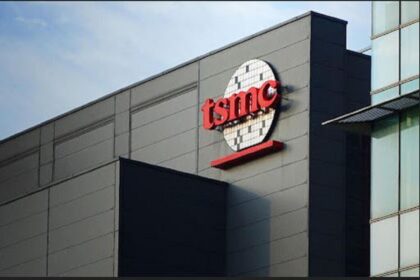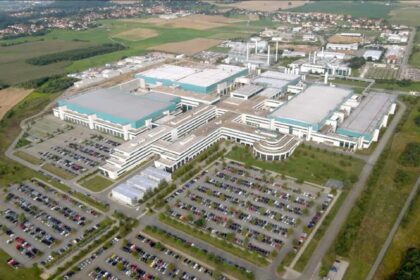On Christmas Day, Eni, the Italian energy company, officially switched on its new supercomputer, HPC6, marking a significant achievement in both the tech and energy sectors. Positioned as the world’s fifth most powerful supercomputer, HPC6 joins a growing fleet of high-performance computing systems, underscoring Eni’s commitment to advancing energy solutions with cutting-edge technology. Here’s a deep dive into the key features, strategic significance, and future applications of this new supercomputing powerhouse.
What is HPC6 and Where is it Located?
Eni’s HPC6 is an advanced high-performance computing system, housed in the company’s state-of-the-art Green Data Center in Ferrera Erbognone, Lombardy, Italy. The Green Data Center, known for its energy efficiency and sustainability, serves as the perfect backdrop for the cutting-edge capabilities of HPC6.
This supercomputer is part of Eni’s ongoing effort to leverage advanced technologies to optimize operations in the energy sector, from traditional oil and gas exploration to modern renewable energy projects.
HPC6’s Hardware: A Powerful Combination of AMD and Cray Systems
The HPC6 system is powered by a Cray EX235a architecture and runs on AMD’s 3rd generation Epyc CPUs. These CPUs provide the necessary computational power to handle vast amounts of complex data. Paired with around 14,000 AMD MI250X GPUs, HPC6 ensures unparalleled performance, enabling it to achieve a performance peak of 477.9 petaflops, placing it firmly in the top echelons of supercomputing power.
HPE’s Slingshot-11 network fabric connects the system, ensuring high-speed communication between components, which is essential for maintaining the performance of large-scale computational tasks.
The Strategic Role of HPC6 in Eni’s Operations
Eni’s decision to develop HPC6 underscores the increasing importance of supercomputing in the energy sector, particularly in the exploration and efficient production of energy. The primary role of HPC6 will be to assist in processing massive datasets to discover new oil and gas reservoirs and improve the efficiency of renewable energy production.
In an era of digital transformation, supercomputing is integral to Eni’s push toward the energy transition, as outlined by CEO Claudio Descalzi. “Innovation and the constant evolution of technologies are fundamental to maintaining and strengthening Eni’s leadership in the energy transition,” Descalzi remarked. He emphasized that technological advancements, like supercomputing, allow Eni to use energy more efficiently while driving forward the development of sustainable energy solutions.
Cost and Energy Efficiency: A Green Data Center at the Core
The HPC6 system is part of Eni’s larger Green Data Center initiative, which has been designed with both sustainability and high performance in mind. The project, which represents an investment of over €100 million (around $104 million), incorporates energy-saving techniques, reducing the environmental footprint of Eni’s operations.
Eni’s Green Data Center is partially powered by a 1MW photovoltaic solar power plant, and its cooling systems are designed to be highly energy-efficient. For 92% of the year, the data center relies on low-speed air circulation for cooling, significantly reducing reliance on energy-intensive air conditioning.
This eco-friendly approach aligns with Eni’s long-term goal of achieving net-zero emissions, which is supported by the advanced capabilities of HPC6.
Eni’s Supercomputing Fleet: Expanding Capabilities
HPC6 is the latest addition to Eni’s growing supercomputing infrastructure. The company already operates two other supercomputing systems, HPC4 and HPC5, also located at the Green Data Center. Together, these three systems offer a combined computing power of over 500 petaflops, placing Eni among the leaders in the supercomputing domain.
HPC4 and HPC5, although less powerful than HPC6, have been pivotal in supporting Eni’s energy projects. With the addition of HPC6, Eni strengthens its technological capabilities, ensuring that its operations remain at the forefront of innovation in energy efficiency and sustainability.
Impact on the Energy Industry and the Future of Supercomputing
The role of supercomputers in energy exploration and production cannot be overstated. As energy companies worldwide strive to meet growing demands while transitioning to greener practices, systems like HPC6 offer a competitive edge in data processing and decision-making.
For Eni, HPC6 is more than just a technological marvel; it is a tool for improving productivity, discovering new resources, and enhancing sustainability efforts. The combination of high processing power and energy-efficient design positions Eni to meet both current and future energy challenges.
Eni’s integration of supercomputing into its business operations reflects a broader trend in the energy industry, where advanced computing is becoming indispensable for achieving operational excellence and reducing carbon emissions. As more companies adopt supercomputing technology, the energy sector will continue to evolve, bringing about innovations in energy production, storage, and distribution.
FAQ Section
1. What is HPC6 and how powerful is it?
HPC6 is Eni’s newest high-performance computing system, with a peak performance of 477.9 petaflops, making it the fifth most powerful supercomputer in the world.
2. Where is Eni’s HPC6 located?
HPC6 is housed at Eni’s Green Data Center in Ferrera Erbognone, Lombardy, Italy, a facility designed with a focus on energy efficiency and sustainability.
3. What will HPC6 be used for?
HPC6 will assist Eni in processing data for oil and gas reservoir exploration and enhancing the efficiency of renewable energy production.
4. How much did the HPC6 system cost?
The HPC6 system is estimated to have cost over €100 million ($104 million), reflecting its cutting-edge technology and massive computational capabilities.
5. How does the Green Data Center reduce energy consumption?
The Green Data Center uses low-speed air circulation for cooling 92% of the year and is partially powered by a 1MW solar power plant, minimizing its energy usage and environmental impact.

















